Genre: Graphic Adventure Developer: Drew Pictures Publisher: Spectrum Holobyte Players: 1 Released: 1994
I’m looking at a mid-1990s magazine advertisement for the Sega CD game Iron Helix. In front of a background of stars and interstellar dust, a terrified man in a T-shirt is being gunned down by a menacing robot, while yellow text in large type proclaims:
“It’s a deadly, futuristic game of cat & mouse. And suddenly you’re craving cheese.”
Given that cheesy FMV games are a major albatross around the Sega CD’s neck, this strikes one as a truly unfortunate choice of words. Yet the ad also boasts of “explosive 3-D graphics” and “a run-for-your-life depth of play never before seen on Sega CD,” and concludes by asking:
“So, what’ll it be? The glory of your life or a few squares of cheddar?”
In fact, that’s an excellent thesis question for this review. Are we dealing with a glorious adventure or the warmed-over Velveeta of the early ’90s?
In Iron Helix, you’re a crew member aboard the science ship Indiana, living in an era of “cold war” between Earth and the mysterious, alien Thanatosians. Responding to an emergency beacon, you learn that a nearby military vessel, the SS Jeremiah Obrian, has suffered a malfunction while participating in a war game exercise. Now the Obrian is about to launch an unwanted, automated attack on a Thanatosian planet, which could turn this cold war very hot. The ship secretly carries a lethal, DNA-mutating super virus, the titular Iron Helix, that somehow leaked out, causing the computer system to fail to recognize the crew members’ biometric signatures. Those who didn’t succumb to the virus were soon killed by the onboard security robot, the Defender, which still roams the ship’s decks.
In the opening FMV sequence, Admiral Arboc, a high-ranking officer from Earth, orders you to set a course to intercept the Obrian…but all you have to work with are three unarmed zoological probes. Can you avoid the Defender, interface with the ship’s computers, and somehow stop the Obrien before it starts an interstellar holocaust?
Iron Helix is one of those games that sounds terribly complicated when you read the manual, with menu items like “Field Flux Intermix” and “V-Proc Computer.” In truth, the basic gameplay is quite simple. In the first of the game’s four “phases,” you go from room to room and deck to deck, using the compass-like Scan Direction Indicator to systematically check each pre-rendered location for a biological sample that contains DNA. If one of the points on your Indicator flashes to show the presence of DNA, you turn in that direction, and use your robotic arm to find and test the sample. If it’s non-human (and it often is), you’re out of luck, but if it’s human DNA, it may give you access to one of the handful of locked rooms, which is usually the only place to find high-ranking officers’ DNA (especially on higher levels).
Once you’ve collected DNA from the captain, the first officer, and one of two other high-ranking officers, you get a short congratulatory cut scene and phase two begins. Now your job is to find two video messages that are waiting for you, each of which is a short FMV sequence in green monochrome that features one of the crew members. These can potentially be found in any location that has a data access port, so you’ll need to check most of the ship once again. One message tells you how to temporarily disable or destroy the Defender, while the other message tells you how and where to input a sequence that will self-destruct the Obrian. Both give you four-digit codes you’ll need to finish the task, which you’ll want to write down, though the codes and associated locations are also stored in your “notes” file.
Finally, in the last two phases you’ll carry out those two tasks, first neutralizing the Defender by luring it into a room where it can be trapped or destroyed, and then blowing the ship up in phase four, which has to be done within five minutes of finishing phase three, or else a new Defender will spawn. Accomplish that, and you’ll be treated to an ending sequence that seems inspired by Terry Gilliam’s dystopian classic Brazil.
Throughout this process you’ll be harangued by the Defender, and this is where the “cat and mouse” element comes in. Anytime you open a door or access a data port, the Defender will immediately start moving toward that location. It can’t use the ship’s elevator, but it makes very efficient use of the ladder chutes that run between decks. If it reaches the room you’re in, your probe will be destroyed (though you can sometimes survive if there’s a buffer of several pre-rendered points between the Defender and you). As it gets close, a warning alarm will sound and your indicator will flash yellow; when the flash turns red and the alarm jumps to a higher pitch, the Defender is almost upon you.
Your probe has no weapons, and its only defense is a jamming signal that can be unleashed at any time by pressing B. This briefly immobilizes the Defender and can be used to escape a sticky situation. However, jamming uses a fair amount of energy, and can only be done a few times before you’re at risk of running out of power. And if you’re trapped in a dead end or otherwise cross paths with the Defender, no amount of pounding the B button will keep you from getting vaporized.
Fortunately, the Defender can’t track your location directly, but only through your actions. Avoid opening doors until absolutely necessary, and use the ladder chutes to slip between decks, and you can sometimes go a few minutes without attracting attention. The Defender also doesn’t track the vertical movement of the elevator — only the doors — so with a few clever tricks, you can earn valuable breathing room by luring it to the far end of the ship.
Speaking of time, you have 90 minutes to complete your mission, which is more than plenty as long as you keep careful notes and don’t waste time. The game also has a turn-based component, in that no matter how fast you press the D-pad, the Defender will always move after you’ve taken a certain number of actions. (Of course, it will also move if you do nothing.) The short delay between your input and the onscreen response is probably a product of disc access time, but also feels logical in a game where you’re operating a probe by remote control. Thankfully, if your aging Sega CD needs a few attempts to load up the graphics for the next location, Iron Helix doesn’t penalize you for it; the game’s timer only resumes once you’re in the new spot.
The detailed in-game map can be toggled between three different modes. One shows your current deck and location, one shows the Defender’s location, and one offers a zoomed-out view of the whole ship that lets you see where you and your adversary are in relation to each other. There’s also an annotated map of all six decks in the manual. However, when my wife and I played through the game, we ended up keeping a separate map on paper to track all the individual waypoints in each room and which DNA they contained.
Iron Helix has three numbered difficulty settings, and each one completely changes the placement of DNA samples, video messages, and event locations for phases three and four. As you might expect, high-ranking DNA is harder to find on higher difficulties, and crucial samples are sometimes hidden in plain sight (watch that Scan Direction Indicator!). In addition, the Defender gets smarter and faster, and avoiding it on difficulty level three will take precision and quick wits. However, you can save your game at any time, so if you misjudge the Defender and take a risk that doesn’t pay off, you can always reload and try again.
The graphics in Iron Helix are unspectacular but effective. Each room in the Obrian contains up to five or six pre-rendered locations, and the short animations that play as you move between them are smooth and clean. The Sega CD’s low color count gives the visuals a grainy, dark texture, but that’s not a terrible thing in a moody, atmospheric game. Sound effects are appropriate and clear, though there’s no music during gameplay. However, the game’s cut scenes and credit sequences are underscored with synthesizer cues by Peter Stone of Xorcist, in ambient and industrial style. Of these, the short melody that plays when you lose a probe is probably the best of the bunch.
Iron Helix doesn’t use a lot of FMV, but the video it does have is reasonably short, clear, and to the point. The actress who plays Admiral Arboc is hammy (perhaps appropriately so), but the other actors turn in understated, workmanlike performances. If you’re looking for campy bluescreen antics, you (mostly) won’t find that here. Ironically enough, then, the Sega CD game, whose advertising specifically mentions le fromage, turns out to be one of the less cheesy titles on the system.
However, playing Iron Helix is unquestionably a slow, methodical experience. While the box makes it out to be a “heart-pumping” adventure with “an unparalleled level of depth,” it’s absolutely not an action game, nor is Iron Helix all that deep, since the gameplay is largely a matter of meticulously checking every spot in the ship until you find what you need. After a while, this can start to feel like work. Accessing a data port gives you a plethora of menu options, but these largely go unused, and the few that do play a role in the game are only relevant in the last phases.
Still, Iron Helix basically succeeds in doing what it sets out to do. The gameplay is streamlined, free of frustration, and never feels unfair or abrasive. Hardcore action gamers won’t be smitten with Iron Helix, but the kind of player who enjoys puzzle-solving games and graphic adventures will find something to appreciate here. It’s also a fine choice to play with the aid of a friend, family member, or anyone who’s willing to navigate and read maps while you work the controller and dodge the Defender.
And when there’s an inevitable lull in the action, then if you ask nicely, maybe they’ll prepare a plate of cheese and crackers for you to share…which would mean that, contrary to the ad’s claims, you can have glory and “a few squares of cheddar” after all.
SCORE: 7 out of 10

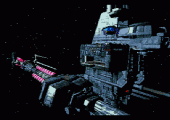
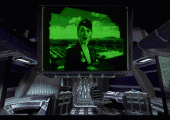
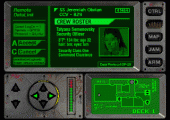
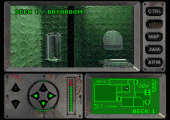
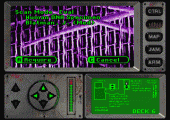
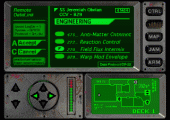
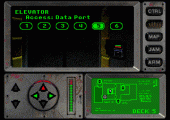
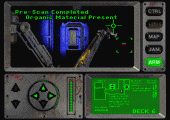
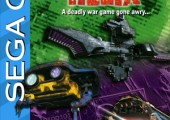
My favorite game of all time Iron Helix on Sega CD. I played this game and beat it so many times and every time it was fun. I had to draw maps on paper with locations of DNA to help me beat the game. I always played the game with lights off and speakers on to set the mood. There is no music just sounds effects but that gives you the real feel of being alone on a space ship. I also had this game on PC but sega cd version was way much better. If you love type of cat and mouse games this is it. I waited a long time for a remake or something close to this and cant find anything and only game that gives similar feel is Alien Insolation for xbox 360 or Ps3. Graphics are amazing for Sega Cd. Worth a try. I would give 10 out of 10